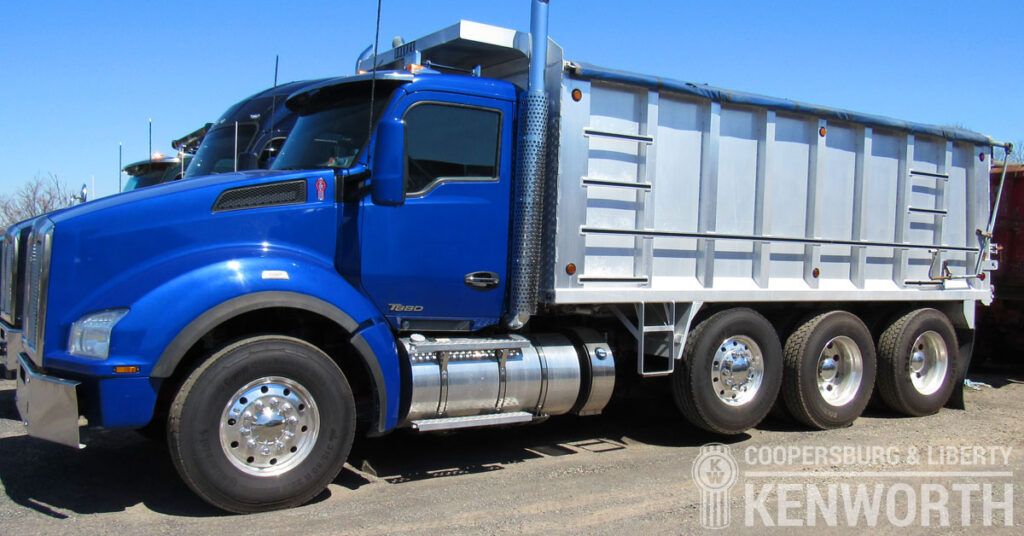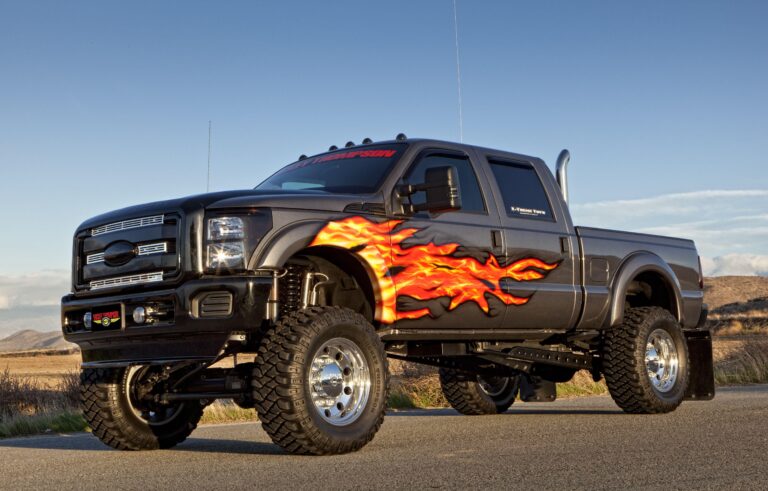How Many Cy Does A Dump Truck Hold: A Comprehensive Guide to Understanding Capacity
How Many Cy Does A Dump Truck Hold: A Comprehensive Guide to Understanding Capacity cars.truckstrend.com
In the world of construction, landscaping, and material transport, few questions are as fundamental yet nuanced as "How many Cy does a dump truck hold?" The answer isn’t a simple, single number. It’s a complex interplay of truck type, material density, legal regulations, and operational considerations. Understanding dump truck capacity, measured in cubic yards (Cy), is crucial for efficient project planning, cost estimation, and, most importantly, safety.
This comprehensive guide will demystify dump truck capacities, exploring the factors that influence them, the various types of trucks available, and practical advice to ensure you select the right vehicle for your hauling needs.
How Many Cy Does A Dump Truck Hold: A Comprehensive Guide to Understanding Capacity
Understanding Cubic Yards (Cy): The Standard Unit of Measurement
Before diving into truck capacities, let’s clarify the unit itself: the cubic yard (Cy). A cubic yard is a volumetric measurement, representing the space occupied by a cube that is one yard (3 feet) long, one yard wide, and one yard high. This translates to 27 cubic feet (3x3x3).
For loose materials like dirt, gravel, sand, mulch, or asphalt, volume is the most intuitive way to measure quantity. When you order material for a project, it’s typically quoted and delivered in cubic yards. Therefore, knowing how many cubic yards a dump truck can hold directly translates to how much material it can transport in a single trip, impacting the number of trips required, project timelines, and overall costs.
Factors Influencing Dump Truck Capacity
The "Cy" capacity of a dump truck is not a static figure. Several critical factors come into play:
- Truck Type and Size: This is arguably the most significant factor. Dump trucks come in a wide array of sizes and configurations, from small personal trucks with dump inserts to massive off-road articulated haulers. Each type is designed for different scales of operation and material types, directly impacting its volumetric capacity.
- Material Density (Weight vs. Volume): This is where most confusion arises. While a truck has a volumetric capacity (how much space it has), it also has a payload capacity (how much weight it can legally carry).

- Light materials (e.g., mulch, wood chips, light topsoil) are often limited by the truck’s volumetric capacity. You might fill the bed to the brim, but the truck isn’t close to its weight limit.
- Dense materials (e.g., sand, gravel, concrete, asphalt) are almost always limited by the truck’s payload capacity. A truck bed might only be half-full by volume, but the weight of the material could already exceed the legal weight limit. Overloading is illegal and extremely dangerous.
- Legal Weight Limits (DOT Regulations): Department of Transportation (DOT) regulations strictly govern the maximum weight a truck can carry on public roads. These limits are based on the truck’s Gross Vehicle Weight Rating (GVWR), Gross Axle Weight Rating (GAWR), and overall vehicle configuration (number of axles). Even if a truck has the physical space for more material, it cannot exceed these legal weight limits.
- Fill Level (Struck vs. Heaped Capacity):
- Struck Capacity: This refers to the volume of the bed if the material is leveled off even with the top of the sideboards.
- Heaped Capacity: This includes the material piled above the sideboards, usually at a 2:1 angle of repose. Most dump truck capacities are quoted as "heaped" because loose materials naturally form a heap. However, the stability and safety of a heaped load depend on the material and driving conditions.


Common Dump Truck Types and Their Typical Cy Capacities
To provide a clearer picture, let’s break down the common types of dump trucks and their typical cubic yard capacities. Remember, these are averages, and specific models may vary.
-
Light-Duty Pickup with Dump Insert:
- Volumetric Capacity: 1-3 Cy
- Payload Capacity: 1,500 – 3,000 lbs (0.75 – 1.5 tons)
- Use Cases: Small DIY projects, residential landscaping, light debris removal. Limited by both volume and weight.
-
Single Axle Dump Truck (Small Commercial):
- Volumetric Capacity: 5-7 Cy
- Payload Capacity: 5 – 8 tons (10,000 – 16,000 lbs)
- Use Cases: Small to medium residential construction, material delivery for driveways, utility work. More versatile than a pickup.
-
Tandem Axle Dump Truck (Standard Construction Dump Truck):
- Volumetric Capacity: 10-16 Cy
- Payload Capacity: 12 – 18 tons (24,000 – 36,000 lbs)
- Use Cases: The workhorse of the construction industry. Ideal for hauling aggregates (gravel, sand), dirt, asphalt, and demolition debris for most medium to large projects.
-
Tri-Axle / Quad-Axle Dump Truck:
- Volumetric Capacity: 18-25+ Cy
- Payload Capacity: 20 – 28 tons (40,000 – 56,000 lbs)
- Use Cases: Larger construction projects requiring significant material movement, long-haul transport of heavy aggregates. The extra axles distribute weight, allowing for higher legal payloads.
-
Semi-Dump Trailers (End Dump, Belly Dump, Side Dump): These are trailers pulled by a semi-tractor.
- End Dump Trailer:
- Volumetric Capacity: 20-40 Cy (can be 50+ Cy for very light materials)
- Payload Capacity: 20 – 25 tons (40,000 – 50,000 lbs)
- Use Cases: General material hauling, often for large quantities of aggregates, dirt, or asphalt. Dumps material out the back.
- Belly Dump (Bottom Dump) Trailer:
- Volumetric Capacity: 20-30 Cy
- Payload Capacity: 20 – 25 tons (40,000 – 50,000 lbs)
- Use Cases: Spreading material in a windrow (e.g., gravel for roads, asphalt base). Material discharges from the bottom.
- Side Dump Trailer:
- Volumetric Capacity: 20-35 Cy
- Payload Capacity: 20 – 25 tons (40,000 – 50,000 lbs)
- Use Cases: Versatile for various materials, including large rocks or demolition debris that might get stuck in an end dump. Dumps material to either side.
- End Dump Trailer:
-
Articulated Dump Trucks (Off-Road Haulers):
- Volumetric Capacity: 20-40+ Cy (some specialized models much larger)
- Payload Capacity: 25 – 60+ tons (50,000 – 120,000+ lbs)
- Use Cases: Large-scale earthmoving, mining, quarry operations, and construction sites with extremely challenging terrain. Not street legal for public roads when loaded.
Calculating Your Needs: Practical Advice
To determine how many Cy you need to haul and what type of truck is best, follow these steps:
-
Estimate Material Volume:
- For rectangular areas: Length (ft) x Width (ft) x Depth (ft) = Total Cubic Feet. Divide by 27 to get Cubic Yards.
- For irregular areas, break them down into simpler shapes or consult with a professional.
- Always add a small buffer (5-10%) for material compaction or unforeseen needs.
-
Know Your Material’s Density: This is crucial. For example:
- Sand (dry): ~2,700 lbs/Cy (1.35 tons/Cy)
- Gravel (typical): ~2,800 – 3,000 lbs/Cy (1.4 – 1.5 tons/Cy)
- Topsoil (dry): ~2,200 lbs/Cy (1.1 tons/Cy)
- Mulch (wood chips): ~500 – 800 lbs/Cy (0.25 – 0.4 tons/Cy)
- Asphalt: ~4,000 lbs/Cy (2 tons/Cy)
- (Note: Moisture content significantly affects density.)
-
Determine Payload Limit: If you have 15 Cy of gravel, and your standard tandem axle dump truck has a volumetric capacity of 14 Cy and a payload capacity of 15 tons, you need to check both.
- 15 Cy gravel * 1.5 tons/Cy = 22.5 tons.
- Your truck can only carry 15 tons. This means you can only take 15 tons / 1.5 tons/Cy = 10 Cy per trip. Even though the bed looks like it could fit 14 Cy, you’d be dangerously overloaded.
- Conversely, if you have 15 Cy of mulch, and your truck can hold 14 Cy and 15 tons, you can likely take the full 14 Cy, as 14 Cy * 0.4 tons/Cy = 5.6 tons, well within the weight limit.
-
Factor in Accessibility: Can a large tri-axle or semi-truck safely access and maneuver on your job site? Tight turns, low overhead clearances, soft ground, or steep inclines might necessitate using smaller, more agile trucks, even if it means more trips.
Important Considerations & Challenges
- Overloading Risks: Exceeding legal weight limits is not just about fines; it’s a serious safety hazard. Overloaded trucks have longer braking distances, reduced steering control, increased tire blow-out risk, and put undue stress on vehicle components, leading to breakdowns and accidents.
- Cost vs. Efficiency: While larger trucks offer economy of scale (fewer trips, potentially lower per-yard cost), they might be overkill for small jobs or impractical for limited access sites. Balancing the two is key.
- Driver Skill: Properly loading and operating a dump truck, especially a large one, requires skill and experience. Uneven loads can affect stability and handling.
Tips for Efficient Material Transport
- Communicate Clearly: When ordering material or hiring a hauler, specify the material type, the total quantity needed, and any site-specific access restrictions.
- Know Your Truck’s Specs: If you own or operate a dump truck, be intimately familiar with its GVWR, GAWR, and both struck and heaped volumetric capacities.
- Weigh Your Loads: For commercial operations, using a truck scale (or estimated weights based on density) is essential to ensure compliance and safety.
- Optimize Loading: Load material evenly across the truck bed to maintain balance and prevent stress on specific axles.
- Plan Routes: Consider traffic, road conditions, and any weight-restricted bridges or roads when planning transport routes.
Typical Dump Truck Capacities by Type
Here’s a comprehensive table summarizing the typical capacities for various dump truck types, helping you quickly grasp their capabilities.
| Dump Truck Type | Typical Volumetric Capacity (Cubic Yards – Cy) | Typical Payload Capacity (Tons) | Common Material Types for Capacity Limit | Common Use Cases |
|---|---|---|---|---|
| Pickup w/ Dump Insert | 1 – 3 Cy | 0.75 – 1.5 tons | Mulch, Light Topsoil, Small Debris | Small DIY projects, Residential Landscaping, Light Hauling |
| Single Axle Dump Truck | 5 – 7 Cy | 5 – 8 tons | Sand, Gravel, Dirt | Residential Construction, Utility Work, Small Material Deliveries |
| Tandem Axle Dump Truck | 10 – 16 Cy | 12 – 18 tons | Aggregates, Dirt, Asphalt, Demolition Debris | Standard Construction, Roadwork, Site Prep |
| Tri-Axle / Quad-Axle Dump | 18 – 25+ Cy | 20 – 28 tons | Heavy Aggregates, Large Volume Dirt | Large Construction Projects, Long-Haul Transport |
| Semi End Dump Trailer | 20 – 40 Cy (up to 50+ Cy for light) | 20 – 25 tons | Heavy Aggregates, Sand, Dirt, Asphalt | Large-scale Material Hauling, Quarry & Mining Transport |
| Semi Belly Dump Trailer | 20 – 30 Cy | 20 – 25 tons | Aggregates, Sand | Road Base Spreading, Windrow Material Delivery |
| Semi Side Dump Trailer | 20 – 35 Cy | 20 – 25 tons | Aggregates, Rip Rap, Demolition Debris | Versatile Material Handling, Uneven Terrain Discharge |
| Articulated Dump Truck (Off-Road) | 20 – 40+ Cy | 25 – 60+ tons | Heavy Rock, Ore, Large Volumes of Earth | Mining, Quarrying, Large Earthmoving Projects (Off-road only) |
Note: Payload capacity is often the limiting factor for dense materials, even if the volumetric capacity is higher. Always verify with the specific truck’s specifications and local legal limits.
Frequently Asked Questions (FAQ)
Q: What’s the difference between "struck" and "heaped" capacity?
A: Struck capacity is the volume of the truck bed if the material is perfectly level with the top. Heaped capacity includes material piled above the sides, which is how loose materials are typically transported. Most quoted capacities are heaped.
Q: Can I just fill my dump truck to the brim?
A: Not necessarily. If you’re hauling dense materials like gravel or sand, filling it to the brim will almost certainly put you over the legal weight limit, even if there’s still some volumetric space available. Always consider the weight of your material.
Q: How do I know the weight of the material I’m hauling?
A: Material suppliers can provide density figures (e.g., pounds per cubic yard or tons per cubic yard). You can then multiply the cubic yards by the material’s density to get an estimated weight. For critical loads, use a certified truck scale.
Q: What happens if I overload a dump truck?
A: Overloading is illegal and carries significant fines. More importantly, it’s extremely dangerous, compromising braking, steering, and stability. It also causes excessive wear and tear on the truck’s components, leading to costly maintenance and shorter vehicle life.
Q: Are all cubic yards of material the same?
A: A cubic yard is a consistent unit of volume (27 cubic feet). However, the weight of one cubic yard varies dramatically depending on the material. One cubic yard of mulch weighs far less than one cubic yard of concrete. This difference in density is key to understanding effective dump truck capacity.
Conclusion
Understanding "how many Cy does a dump truck hold" is more than just knowing a number; it’s about grasping the dynamic relationship between volume, weight, truck type, and regulatory limits. By considering material density, legal payload capacities, and the specific requirements of your project, you can make informed decisions that optimize efficiency, control costs, and, most importantly, ensure safety on the road and at the job site. Always prioritize safety and legal compliance over simply maximizing volume.





